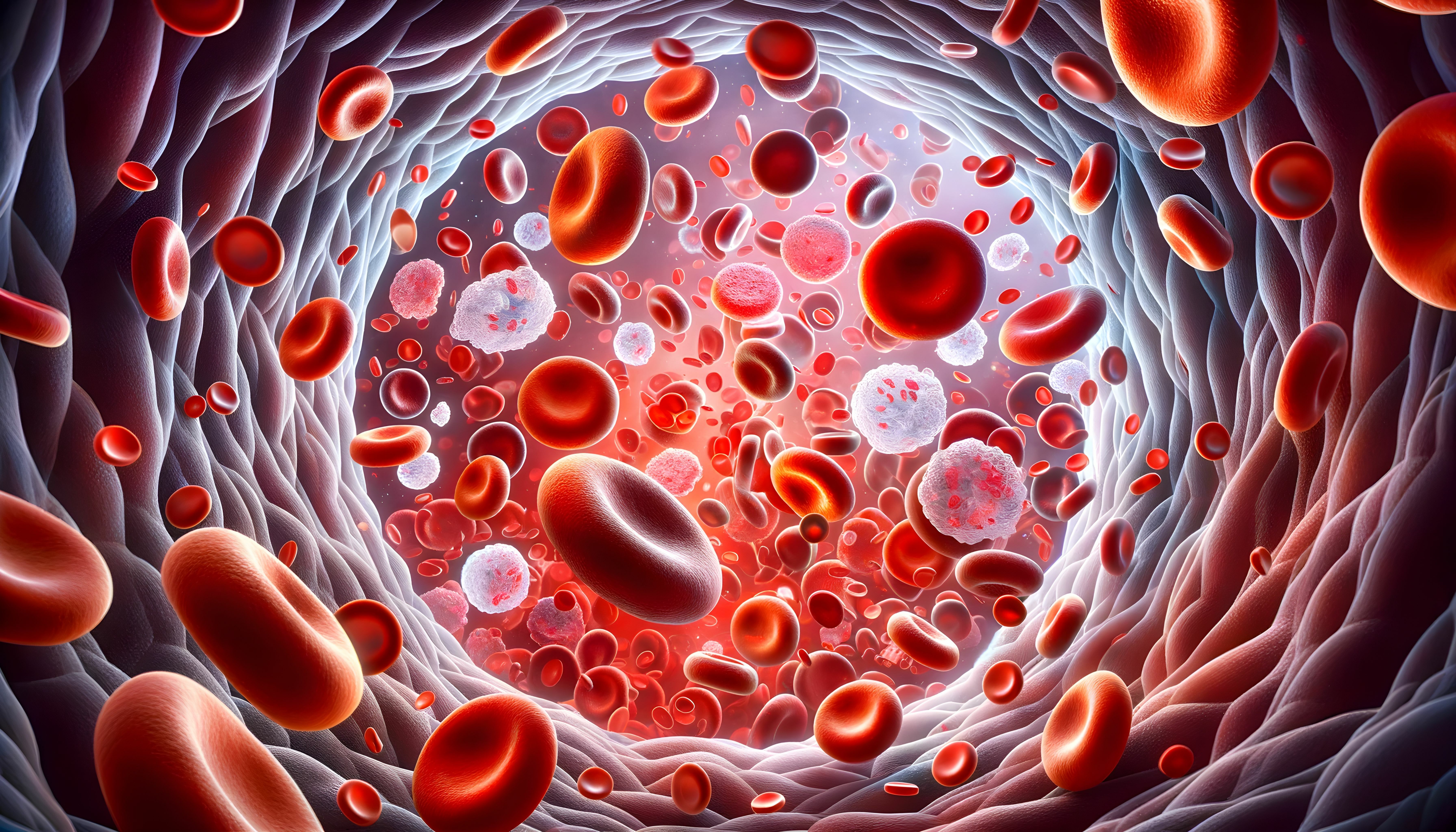News
Article
Phase 1b/2 Study Supports Use of Telaglenastat and Azacytidine in Advanced MDS
Author(s):
Key Takeaways
- The trial showed a 54% overall response rate, with 18% achieving complete remission and 36% marrow complete remission.
- Treatment-naïve patients had better outcomes, with a median overall survival of 21.6 months compared to 6.8 months for previously treated patients.
A recent study evaluates the dosing, safety, and efficacy of telaglenastat and azacytidine to treat advanced myelodysplastic syndromes (MDS), with promising results.
A recent study published in Nature Cancer presents results from a clinical trial combining glutaminase inhibition with azacytidine (AZA) to treat advanced myelodysplastic syndromes (MDS). The trial, a phase 1b/2 study, examined the safety, tolerability, and efficacy of telaglenastat (CB-839) in conjunction with AZA. Their findings bolster support for the ongoing use of glutaminase (GLS) inhibition with CB-839 combinations in patients with myeloid malignancies.1
Myeloid malignancy concept, blood cells floating | image credit: Eleni - stock.adobe.com

Cancer cells, particularly those in hematologic malignancies such as myelodysplastic syndromes (MDS) and acute myeloid leukemia(AML), rely heavily on glutamine for energy production through oxidative phosphorylation.2 CB-839, a glutaminase inhibitor, targets the enzyme responsible for glutamine metabolism in cancer cells. By inhibiting glutaminase, CB-839 cuts off this essential energy source. Preclinical data demonstrated that combining CB-839 with AZA could enhance anti-cancer activity by impairing glutamine metabolism and disrupting DNA methylation.
The trial enrolled 30 participants with advanced MDS, 28 of whom received treatment with CB-839 and AZA. The median age of participants was 70 years (range 41-83 years). Thirty-six percent of participants had received prior MDS-directed therapy, including hypomethylating agents (HMAs), while 32% were diagnosed with therapy-related MDS, and 25% had chronic myelomonocytic leukemia (CMML).1
The results from the study showed an overall response rate (ORR) of 54%. Among the 28 treated participants, 18% achieved complete remission (CR), and 36% achieved marrow complete remission (mCR). An additional 11% experienced hematologic improvement (HI). Twenty-five percent of participants successfully transitioned to allogeneic stem cell transplantation (SCT). The time to response occurred after a median of 2.3 treatment cycles (range 1-4 cycles).
Treatment-naïve patients achieved an ORR of 61%, with 28% achieving CR and 28% reaching mCR. Participants previously treated with other therapies, including HMAs, also responded to the combination therapy, with an ORR of 70%, although most achieved mCR rather than full CR. Of the 10 participants with complex cytogenetics, 7 responded, including 2 who reached CR and 2 who achieved mCR.
The median overall survival (mOS) for all participants was 11.6 months, with a 1-year overall survival rate of 46.4%. Treatment-naive participants were found to have a mOS of 21.6 months, while mOS was 6.8 months for previously treated participants. Cases of full CR were only observed in treatment-naïve participants.
The study also found that participants with higher expression of GLS had a significantly worse survival rate. Patients with high GLS had a mOS of 2.75 years compared to 5.76 years in low expressors (P = .004). This was found to be true regardless of age (P = .00923; HR = 1.964; 95% CI, 1.1816-3.266). "Our findings support the previously unrecognized role of glutamine in stem cells of persons with high-risk MDS, associated with overexpression of the specific glutamine transporter SLC38A1, facilitating glutamine uptake and its use," the authors explain.
The combination therapy of CB-839 and AZA was generally well-tolerated. The most common non-hematologic adverse events were nausea (52%), constipation (39%), and generalized weakness (17%). Grade 3 or higher adverse events included neutropenia (30%) and thrombocytopenia (26%). No cases of tumor lysis syndrome or differentiation syndrome were reported. The 30-day and 60-day mortality rates were reported as 0% and 3.6%, respectively.
For patients with higher-risk MDS, the standard of care typically involves HMAs like AZA or decitabine, which work to improve blood cell counts, reduce transfusion needs, and extend survival.3 The study's findings are positive for clinicians treating patients with higher-risk MDS, particularly those who have exhausted traditional treatment options. "These results support the ongoing exploration of GLS inhibition with CB-839 combinations in persons with myeloid malignancies," the authors conclude.
References:
- Konopleva M, DiNardo C, Bhagat T, et al. Glutaminase inhibition in combination with azacytidine in myelodysplastic syndromes: clinical efficacy and correlative analyses. Nat Cancer. 2024; doi:10.1038/s43018-024-00811-3
- Jin, J., Byun, J., Choi, Y., & Park, K. (2023). Targeting glutamine metabolism as a therapeutic strategy for cancer. Exp Mol Med. 2023;55(4):706-715. doi:10.1038/s12276-023-00971-9
- Koenig KL, Borate U. New investigational combinations for higher-risk MDS. Hematology Am Soc Hematol Educ Program. 2022;2022(1):368-374. doi:10.1182/hematology.2022000351




